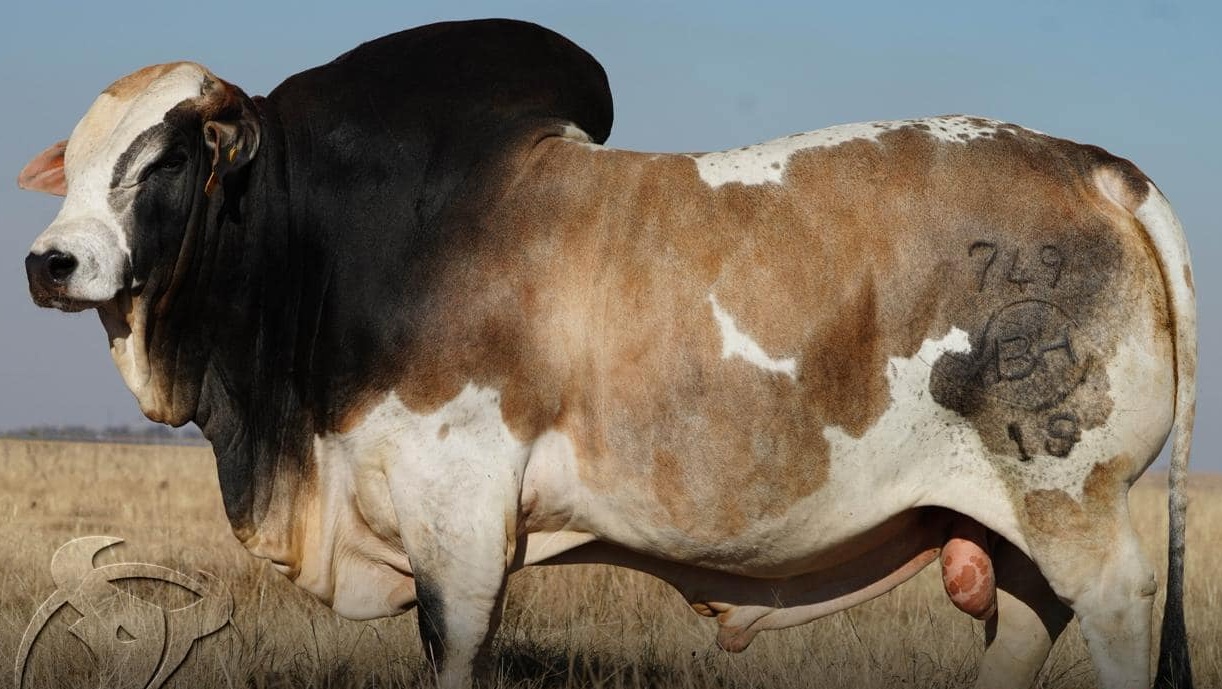By https://delavidaboran.co.za/
The genetic composition of the Boran is unique, making it your best choice for cross-breeding.
European Bos Taurus – 24%
Bos Indicus – 64%
African Bos Taurus – 12%
The Boran is the mothering cow of Africa
The Boran cows have very good udders with well-formed teats and produce enough milk to wean calves that weigh more than 50% of dams weight at weaning. Their good mothering instinct provides a deterrent against predators. This trait also generates an excellent survival rate for the calves. She produces small calves at birth, male calves average 28 kg and female calves average 25kg. Calving problems hardly exist.
Longevity
It is quite normal for a 15-year-old cow to be sound-mouthed and it is also on record that a 16-year-old Boran bull is still producing high-quality semen for artificial insemination.
Fertility
It is acknowledged that the greatest attribute of the Boran is its fertility. Even under harsh conditions, the Boran cow will continue to breed and rear calves and do this without punishing herself. One explanation for this high fertility is that the cow has relatively low body weight loss over the suckling period, thereby maintaining a good condition, and thus able to conceive again.
Disease Resistance
A loose but very motile skin with a very short covering of hair and a high secretion of an oily substance makes the Boran a less desirable host for ticks and flies. This together with thick eye banks with very long eyelashes and a long tail with a big well-formed twitch all protect this indigenousness breed against insects.
Temperament
Boran cattle are recognized as being generally, quiet, docile and easy to handle. This trait has developed over many generations of cattle living close to man.
Carcass Quality
Trials in Nebraska, U.S.A, show that the Boran and its crosses score consistently better than other Zebu Breeds for meat tenderness, carcass marbling and rib eye area.
Herd instinct
The herd instinct of the Boran makes it easy to manage in bush country. The strong herd instinct makes it almost impossible to steal a single animal out of a herd, thus attempting to steal them a very difficult task.
Good converter of roughage into good quality beef.
The Boran is a breed that is successfully fattened off the veld with no energy supplement. The Boran is also a good browser and under difficult circumstances it can stay in good condition.
Early Maturing
Boran heifers reach puberty at an average age of 385 days.
Disadvantages of Boran Breed
In conclusion, what may seem like the disadvantages of Boran cattle can be reframed as advantages, depending on the goals and strategies of farmers and breeders. Their unique characteristics make them a valuable asset in diverse agricultural contexts.
Disadvantages of the Boran
Low Milk Production: Boran cattle prioritize meat production over milk. This is advantageous for meat-focused farmers, as Boran cattle efficiently convert feed into high-quality beef.
Slow Growth: Boran’s slower growth rate can be an advantage. They mature at a more gradual pace, allowing farmers to manage their growth and adapt to changing market conditions effectively.
Size and Weight: Their smaller size is a positive attribute in terms of resource efficiency. It means they require less food and space, making them well-suited for small-scale and sustainable farming.
Market Demand: While Boran may have a niche market, this can be an advantage. Their unique genetics and meat quality can fetch premium prices in speciality markets.
Genetic Diversity: Boran cattle’s unique genetic makeup can be harnessed for breed improvement. Their genetic distinctiveness can be a source of valuable traits for breeding programs.
Limited Information: The scarcity of information can drive innovation. Farmers and researchers can explore new approaches and techniques to maximize the potential of Boran cattle.
In conclusion, what may seem like the disadvantages of Boran cattle can be reframed as advantages, depending on the goals and strategies of farmers and breeders. Their unique characteristics make them a valuable asset in diverse agricultural contexts.

